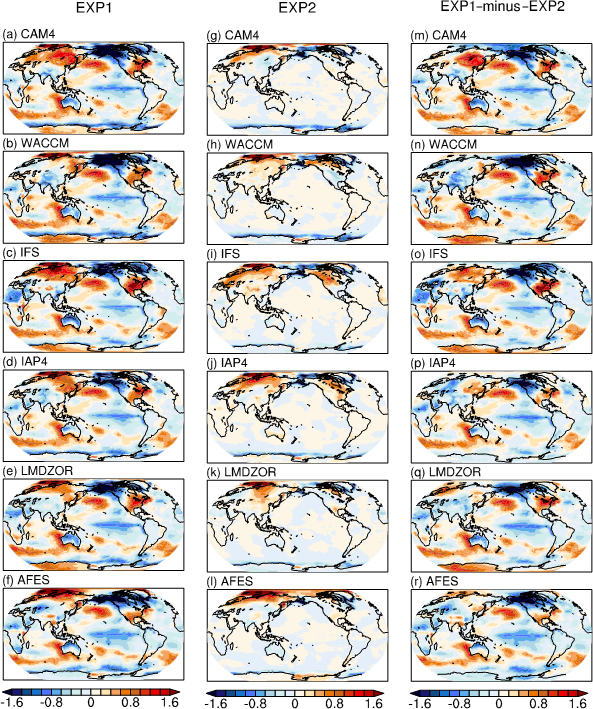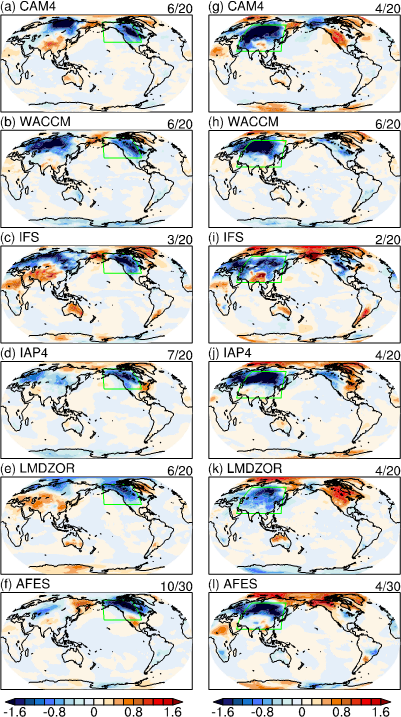本世纪初以来的十几年内,全球变暖减缓,引起国际社会广泛关注。观测表明,21世纪初以来,在北半球冬季,除了欧亚大陆变冷之外,北美、非洲、澳洲、南美、格陵兰岛均出现不同程度的变冷趋势。
目前主流观点认为,自然变率是全球变暖减缓的主要原因。相关研究分别对比了热带太平洋海温和辐射强迫、北极海冰和大气变率、热带太平洋海温和大气变率对全球变暖减缓的相对贡献。本研究利用多模式数值试验,对比了海温和海冰在全球陆地变冷趋势中的作用。第一组试验以逐日变化的海温和海冰作为边界条件(EXP1),第二组试验以逐日的气候态海温和实际观测变化的海冰作为边界条件(EXP2);共6个大气模式,每个模式有20或30个集合,不同集合之间仅大气初始条件不同。结果表明,EXP1(以及EXP1-minus-EXP2)的6个模式基本一致模拟出了全球陆地气温(除了欧亚)的变化趋势,进一步验证了PDO对全球变暖信号的重要调制作用(Fig. 1)。此外,并不是模式中的所有集合都可以模拟出北美和欧亚大陆的变冷趋势,也体现了大气变率的贡献(Fig. 2)。

Fig.1 (a–f) Simulated global surface temperature trend patterns (°C per decade) in winter for 2002−2013 from ensembles’ means of (a) CAM4, (b) WACCM, (c) IFS, (d) IAP4, (e) LMDZOR, and (f) AFES in EXP1, respectively. (g–l) And (m–r) same as (a–f), but in EXP2 and EXP1-minus-EXP2, respectively.

Fig.2 Simulated global surface temperature trend patterns (°C per decade) in winter for 2002−2013 from the ensemble members (from which the model ensemble mean has been removed) that have simulated the North American cooling trend in (a) CAM4, (b) WACCM, (c) IFS, (d) IAP4, (e) LMDZOR, and (f) AFES in EXP1, respectively. (g–l) Same as (a–f), but for ensemble members that have simulated the Eurasian cooling trend.
相关文献:
Xu, X., S. He, T. Furevik, Y. Gao, H. Wang, F. Li, and F. Ogawa, 2020: Oceanic forcing of the global warming slowdown in multi-model simulations. International Journal of Climatology, 1–14, https://doi.org/10.1002/joc.6548.
